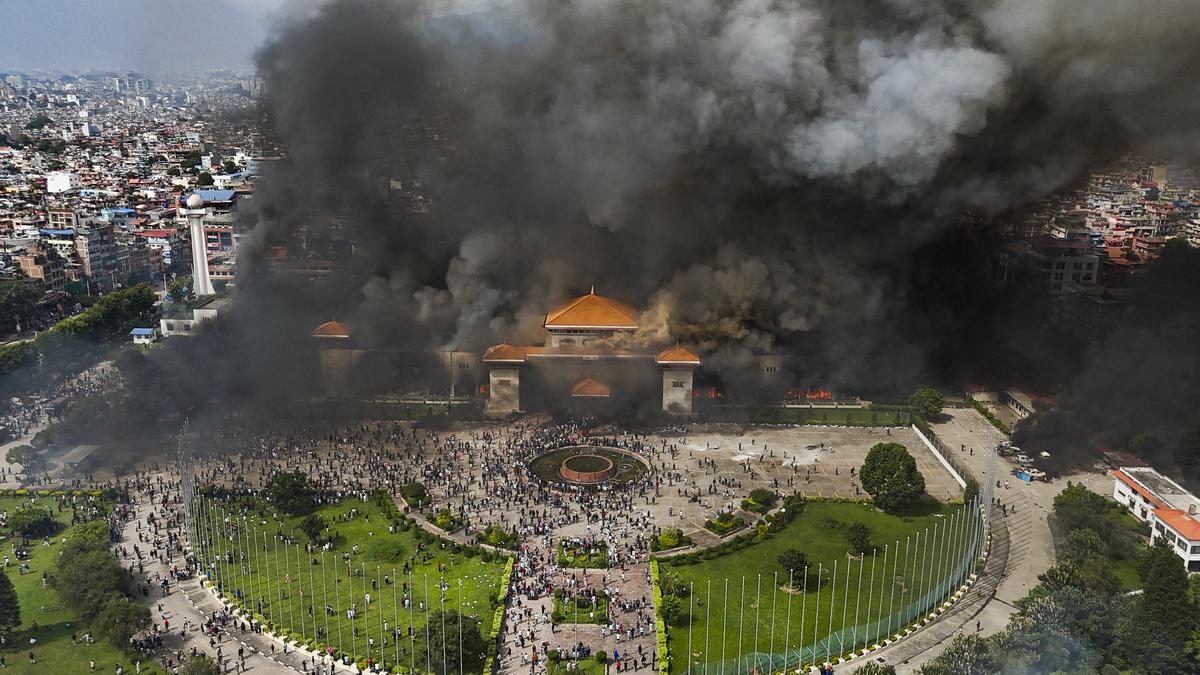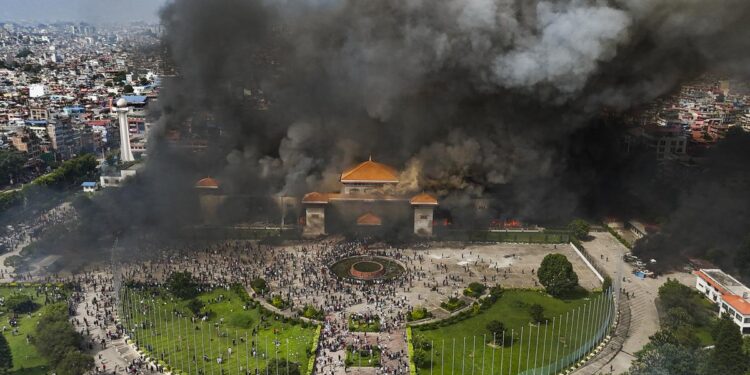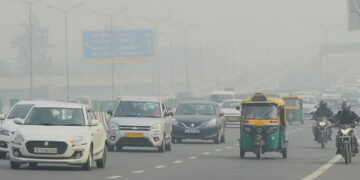
Nepal is witnessing one of the most significant political upheavals in recent times as protests continue for the third consecutive day, demanding accountability for corruption and opposing the short-lived social media ban. Prime Minister KP Sharma Oli resigned amid rising pressure and public outrage, but the unrest shows no sign of abating.
The president of Nepal has accepted Oli’s resignation and appointed him to lead a caretaker government until a new administration is formed, although his exact powers remain unclear. Despite this, thousands of protesters remained on the streets, blocking roads and vandalising government offices, signaling the deep frustration among citizens over the political elite.
Violence Spreads Across Capital and Major Cities
Violent demonstrations have engulfed the capital, Kathmandu, and other regions, with mobs setting fire to government buildings, private homes, and major institutions. Among the damaged sites is the Kantipur TV headquarters, a prominent media outlet, which was set ablaze by protestors. Retail chains, such as the Bhat-Bhateni Supermarket in Bharatpur, have also been targeted, adding to the widespread chaos.
The unrest has been fueled by a combination of factors, including a social media ban that briefly restricted online communications and ongoing allegations of political corruption. Young people, particularly Nepal’s Gen Z, have led the demonstrations, calling for transparency and justice. Leaders, including former Prime Minister Sher Bahadur Deuba, were attacked during the protests, highlighting the intensity of public anger.
Nepal Army Steps In to Restore Order
The Nepal Army has been deployed to maintain law and order amid escalating violence. General Ashok Raj Sigdel, Chief of the Nepali Army, urged protestors to resolve disputes peacefully, emphasizing national unity and the importance of safeguarding public and private property. Army personnel have taken control of strategic locations, including Kathmandu Airport and the Secretariat Building, to prevent further disruption.
The ongoing protests have also affected neighboring India. Central agencies in India have issued alerts along the India-Nepal border, with the Uttar Pradesh and Uttarakhand governments stepping up security measures. Additional police forces have been deployed, and special helplines have been activated to assist stranded Indian nationals in Nepal. The Indian authorities continue to monitor social media for potentially sensitive content and misinformation related to the Nepal unrest.
The situation has created logistical challenges for travelers and pilgrims. Indian tourists, including those planning visits to the Pashupatinath Temple and the Kailash Mansarovar pilgrimage, have had to cut short their trips and return home due to airport closures and flight cancellations. Many have expressed concern over safety while navigating the tense environment.
International Response and Call for Peace
Russia has called for a peaceful resolution to Nepal’s crisis and advised its citizens to avoid traveling to the country. The Russian Foreign Ministry emphasized the importance of resolving the internal political turmoil through legal channels and monitoring the situation closely.
Despite the caretaker government and military interventions, the mood on the streets remains tense. Protestors continue to demand transparency and accountability, rejecting half-measures and insisting on systemic changes. The demonstrations have become a symbol of the growing assertiveness of Nepal’s youth, reflecting a broader call for reform and social justice in the Himalayan nation.
Authorities in Nepal and India remain vigilant, coordinating efforts to prevent escalation and protect civilians. The coming days are critical, as the international community, neighboring countries, and Nepalese leaders seek a peaceful resolution while addressing the grievances of a population frustrated with persistent political instability.
As Nepal navigates this challenging period, the world watches closely, highlighting the delicate balance between governance, civil liberties, and public trust in one of South Asia’s most geopolitically significant nations. Analysts note that how Nepal manages these protests could set a precedent for political accountability, youth activism, and democratic resilience across the region.
















